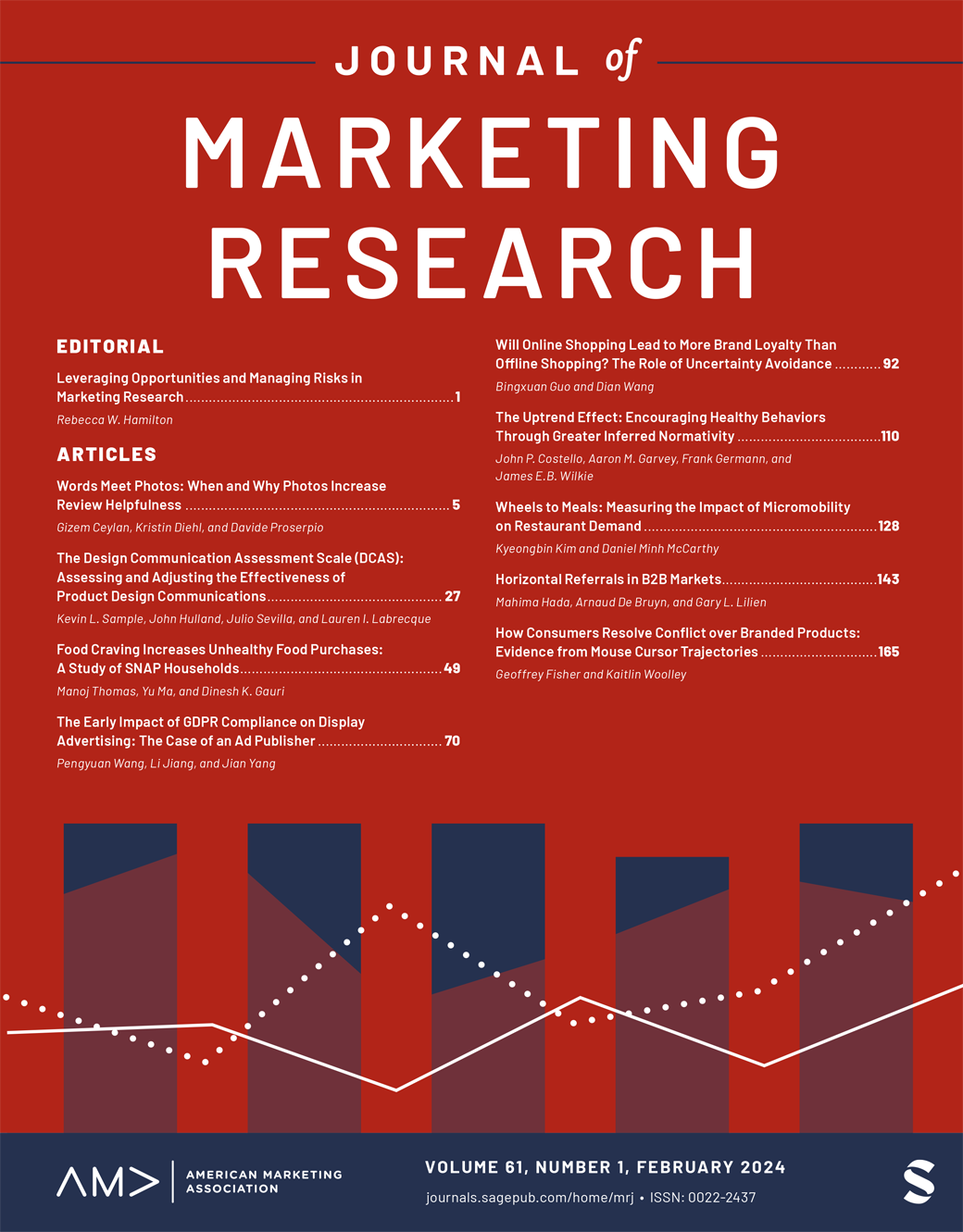快递:金丝雀类别
IF 5
1区 管理学
Q1 BUSINESS
引用次数: 0
摘要
顾客过去在某一品类的消费通常是未来顾客消费的积极信号。我们的研究表明,有一些 "金丝雀品类 "的情况恰恰相反。在这些品类中的消费是一个信号,表明顾客不太可能再次光顾该零售商。我们在两家零售商身上证明了这一发现的稳健性。我们对 "金丝雀 "品类的存在提出了解释,然后建立了一个风格化模型,说明了四个促成因素:顾客找到自己喜爱品牌的概率、顾客替代品牌的意愿、访问其他商店的成本和吸引力以及对未来品牌可用性的预期。我们利用实地数据和实验来研究这些因素。研究结果表明,"金丝雀 "品类之所以存在(至少部分存在),是因为商店的商品种类没有完全适应当地人的偏好。这意味着,金丝雀品类对每个零售商来说都是内生的;同一个品类可能在某个零售商那里是金丝雀品类,而在竞争零售商那里则是目标品类。本文章由计算机程序翻译,如有差异,请以英文原文为准。
EXPRESS: Canary Categories
Past customer spending in a category is generally a positive signal of future customer spending. We show that there exist “canary categories” for which the reverse is true. Purchases in these categories are a signal that customers are less likely to return to that retailer. We demonstrate the robustness of this finding at two retailers. We propose an explanation for the existence of canary categories and then develop a stylized model that illustrates four contributing factors: the probability a customer finds their favorite brand, customers’ willingness to substitute brands, the cost and attractiveness of visiting other stores, and expectations about future brand availability. We use both field data and experiments to investigate these factors. The findings suggest that canary categories exist (at least in part) because store assortments are not completely adjusted to local preferences. An implication is that canary categories are endogenous to each retailer; the same category may be a canary category at one retailer and a destination category at a competing retailer.
求助全文
通过发布文献求助,成功后即可免费获取论文全文。
去求助
来源期刊

Journal of Marketing Research
BUSINESS-
CiteScore
10.30
自引率
6.60%
发文量
79
期刊介绍:
JMR is written for those academics and practitioners of marketing research who need to be in the forefront of the profession and in possession of the industry"s cutting-edge information. JMR publishes articles representing the entire spectrum of research in marketing. The editorial content is peer-reviewed by an expert panel of leading academics. Articles address the concepts, methods, and applications of marketing research that present new techniques for solving marketing problems; contribute to marketing knowledge based on the use of experimental, descriptive, or analytical techniques; and review and comment on the developments and concepts in related fields that have a bearing on the research industry and its practices.
 求助内容:
求助内容: 应助结果提醒方式:
应助结果提醒方式:


